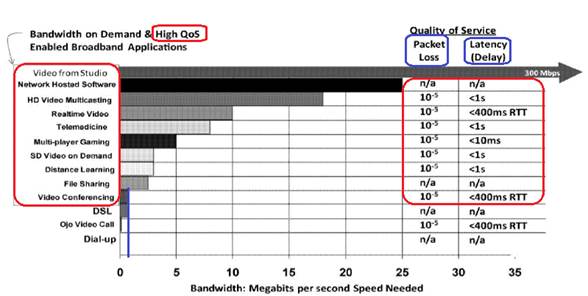
|
CAFC判決 Iridescent
Network v AT&T Mobility 2019年
08月 12日 クレームで使用される造語(業界における一般的ではない用語)の権利範囲 OPINION by Reyna Summarized by Tatsuo YABE –
2019-08-31 |
|
本判決は審査経過中に実施可能要件違反という拒絶に対して出願人が造語(明細書と図面にサポート有り)を用いてクレームを補正し、当該用語の意味合いを説明することで権利化された。本事案では、当該造語の権利範囲(Scope)が争点となった。そもそも出願人は辞書の編集者(lexicographer)である(MPEP2111.01参照)ので、自身で新しい用語を造りクレームで表現することも可能である。然しその場合にクレームの造語の意味合い(権利範囲)は明細書及び経過書類を参酌し決定される。もし造語の意味合いが明細書(内部証拠)を参酌しても不明な場合には112条第2項でクレームは不明瞭と判断され拒絶(無効と)される。本事案の場合には造語のサポートが図面と明細書に明白にあったのでクレームは不明瞭とは判断されなかった。但し、問題となった造語の権利範囲を明細書と図面の開示に限定的に解釈されたので非侵害となった。
|
いずれにしても業界で一般的に使用されていない用語をクレームで用いる場合にはそのサポートとなる開示が明細書・図面(内部証拠)で充実していることと(即ち、無用に減縮解釈されないような開示になっていること)を出願時に確認しておくことが重要である。(以上筆者)
|
■■■■■■■■■■■■■■■■■■■■■■■■■■■■■■■■■■
|
■ 特許権者:Iridescent
Network
■ 被疑侵害者:AT&T
■ 特許:USP
8,036,119
■ 特許発明の概要:
データの送信時にデータ送信の遅れ及びロスを最小にするために要求されるバンド幅を補償するネットワーク通信技術に関する。
|
■■■■■■■■■■■■■■■■■■■■■■■■■■■■■■■■■■
|
■ 争点:
クレーム補正時に使用された”high quality of service connection”という用語は度合いを示す造語(coined
term)であってそのサポートとなる119特許の図3と明細書で開示されたコネクションパラメーターの最低要求を満たすものに限定的に解釈されるか否かである。
|
■ 代表的な特許のクレーム:
|
|
代表的なクレーム |
|
1. A method for
providing bandwidth on demand comprising: receiving, by a
controller positioned in a network, a request for a high quality of service connection supporting
any one of a plurality of one-way and two-way traffic types between an
originating end-point and a terminating end-point, wherein the request
comes from the originating end-point and includes at least one of a
requested amount of bandwidth and a codec; determining, by the controller,
whether the originating end-point is authorized to use the requested
amount of bandwidth or the codec and whether the terminating end-point can
be reached by the controller; directing, by the
controller, a portal that is positioned in the network and physically
separate from the controller to allocate local port resources of the
portal for the connection; negotiating, by
the controller, to reserve far-end resources for the terminating
end-point; and providing, by the controller to the
portal, routing instructions for traffic correspond-ing to the connection
so that the traffic is directed by the portal based only on the routing
instructions provided by the controller, wherein the portal does not perform
any independent routing on the traffic, and wherein the connection
extending from the originating end-point to the terminating end-point is
provided by a dedicated bearer path that includes a required route
sup-ported by the portal and dynamically provisioned by the controller,
and wherein control paths for the connection are sup-ported only between
each of the originating and terminating end-points and the controller and
between the portal and the controller. |
|
出願審査において審査官は”high quality and low latency
bandwidth”という用語を含むクレームは実施可能要件を満たさないとして拒絶した。”high
quality and low latency”をどのように判断するかを明細書を参酌しても理解できない。
|
当該拒絶理由を解消するために出願人は当該用語を—high quality of
service connection --に補正し、そのサポートは図3と明細書(以下)にあると主張した:
As
illustrated by the boxed set of applications on the left side of Fig. 3, high
QoS (quality of service) may be viewed in the present application as having
speeds varying from approximately 1–300 mega-bits per second, packet loss
requirements that are typically about 10-5, and latency requirements that are
typically less than one second. These are commonly used parameters and, as
illustrated in Fig. 3, often vary somewhat based on the type of application. For
example, video conferencing may be possible with the listed parameters, while HD
video multicasting typically has more stringent requirements in order to be
acceptable.
. . . .
Accordingly, Applicant submits that the
term “high quality of service connection” is supported by the various
connection parameters illustrated for high quality of service enabled bandwidth
applications in Fig. 3.
|
上記出願人のクレーム補正と反論によって審査官はクレームを許可した。
|
■ 地裁:
2016年7月11日、IridescentはAT&Tに対して侵害裁判を提起した。Iridescent側のクレーム解釈では”high
quality of service connection”とはバンド幅、遅れ、或いは、パケットロスを含むサービスコネクションパラメータの一つ又は複数のパラメーターの要求を満たすコネクションを確保するものであると主張した。司法官(地裁判事の補助者)はAT&T側のクレーム解釈(少なくとも1秒当たり1メガバイトの送信速度で、アプリのタイプに応じて適用される場合にはパケットロスの要求は10**(-5)
及び送信遅れが一秒以内)の大よそ認めた。さらに司法官は”high
quality of service connection”は度合いを示す用語(term
of degree)であるが本願発明が属する技術分野で通常使用されるものではなく、それは寧ろ出願人による造語であるとした。依って、当該用語の意味合い(度合)は内部証拠(図面、明細書、経過書類)によって決定しうるものである。然るにAT&Aは非侵害であると判示した。」
|
■ CAFC判決:
地裁の判断を支持。
本控訴における争点は”high quality of service connection”という用語は度合いを示す用語であってそれは119特許の図3と明細書で開示されたコネクションパラメーターの最低要求を満たすものに限定的に解釈されるか否かである。CAFCはその通りであると判断する。その理由は以下:
|
地裁が判断したように”high quality of service connection”という用語は技術分野で一般的に使用されるものではなく出願人による造語(coined
term)である。クレームにおいてその造語の意味合いを当業者に十分明白に伝えることはできない。何れのネットワークコネクションであってもあるレベルの品質を伴うサービスを提供するが、クレームは高品質(high quality)のサービスと規定している。然るに、どのレベルが高品質なのかは明細書及び経過書類を参酌し判断することになる。
|
審査経過において出願人は119特許の図3にその根拠を求めたことは明らかであり、図3はコネクション速度、パケットロス、及び、遅れの最低要件を示している。図3(以下)にはボックスで囲みhigh
QoS (“Quality of Service”)とも記されている。
|

|
図3の□で囲まれたエリア(High
Quality of Service)においては地裁がクレーム解釈したのと同じで、高品質のサービス(High
Quality of Service)とは、少なくとも1秒当たり1メガバイトの通信速度で、パケットロスは10**(-5)
及び送信遅れが一秒以内と理解される。
尚、審査経過中においても出願人はhigh
Quality of Serviceという用語の意味合いを図3で示された通信速度、パケットロス、遅れによって説明しており、同説明によって出願が許可された。
|
Iridescentは以下の3点に基づき地裁のクレーム解釈に反論したがいずれも説得性に欠ける:
第1点:クレームの”high
quality of service connection”という文言は引例の”best-effort” connectionと識別するための用語であって数値による要件ではなくアプリケーション毎に要求されるコネクションを確実にするものであると主張した。然しそうであるならば図3で示された全てのコネクションが当該文言の範囲に入るので自己矛盾となる。
|
第2点:経過書類において、出願人がクレームの権利範囲を明白に且つ間違いなく放棄(disavow)したという記録はない。出願人は3M
Innovative Properties v Tredegar Corp (Fed. Cir. 2013)を根拠に主張している。3M判決においてCAFCは出願経過において明白な権利範囲の放棄がない場合にはクレーム用語に通常の意味合いを与えて判断すると述べた。本事案の場合には問題となる用語は当業者にとって一般的な、且つ、通常の用語ではなく、出願による造語であって、造語には通常の意味合いは付与されていない。然るに、内部証拠によって当該用語の権利範囲を調べる必要がある。
|
第3点:経過書類での出願人の主張を仮に考慮に入れたとしても問題となるクレーム用語の解釈には関係がない、何故なら、経過書類における主張は実施可能要件違反に対するものである。即ち、クレームの明瞭性に対する拒絶への反論(主張)であればクレームの権利範囲を制限するかもしれないが実施可能要件違反においてクレームの権利範囲を規定(制限)することはないと主張した。しかし、(CAFCの意見)実施可能要件には2つの側面(機能)があり、一つはクレームされた発明に関する十分な開示が明細書にあることを確保する、2つめは明細書の開示を超えてより広くクレームすることを禁止するためである。即ち、発明の不十分な開示と発明者が実際に発明していた範囲より広範なクレームを禁止するのである。It
is long-settled that “[e]nablement serves the dual function in the patent
system of ensuring adequate disclosure of the claimed invention and of
preventing claims broader than the dis-closed invention. This important doctrine
prevents both inadequate disclosure of an invention and overbroad claim-ing that
might otherwise attempt to cover more than was actually invented.” MagSil
Corp. v. Hitachi Glob. Storage Techs., Inc., 687 F.3d 1377, 1380–81
(Fed. Cir. 2012) (internal citation omitted); see also Nat’l Recovery
Techs., Inc. v. Magnetic Separation Sys., Inc., 166 F.3d 1190, 1195–96
(Fed. Cir. 1999). Thus, Iridescent’s statements made to overcome the
examiner’s enablement rejection inform the claim construction analysis by
demonstrating how Iridescent understood the scope of the disputed term.
|